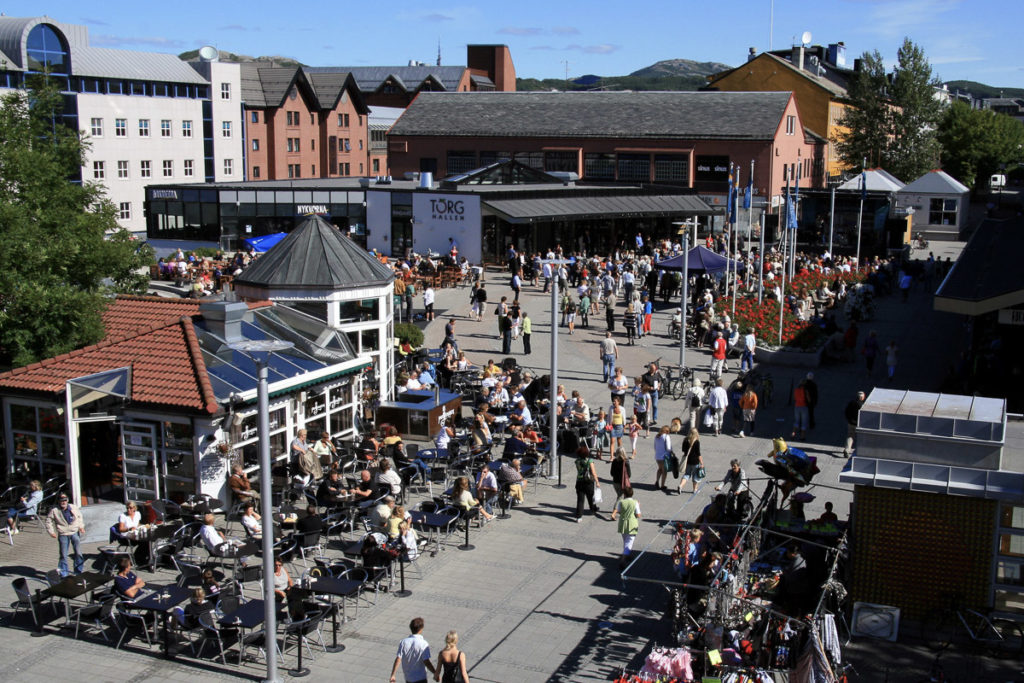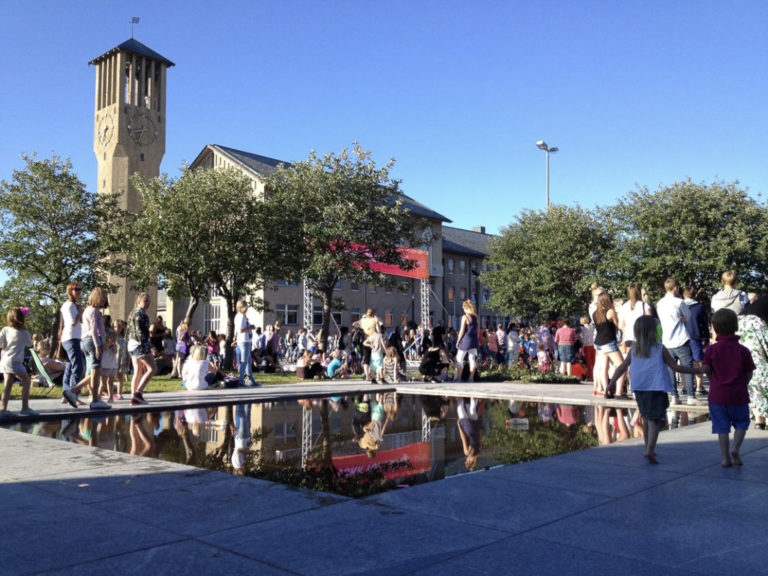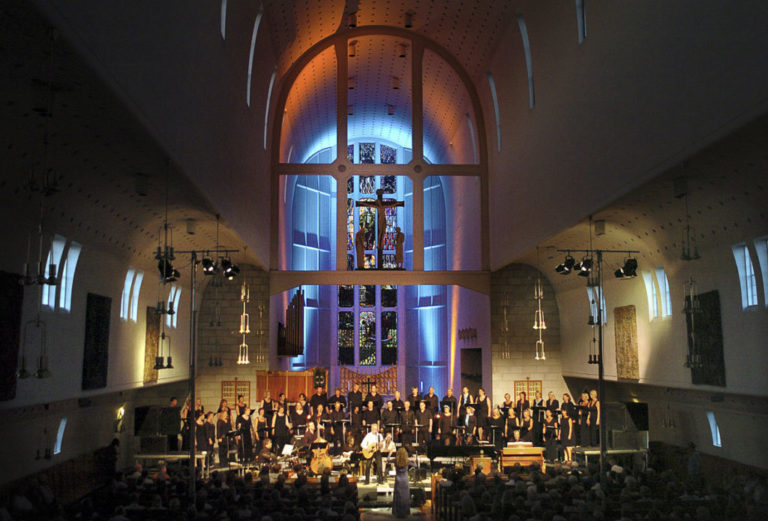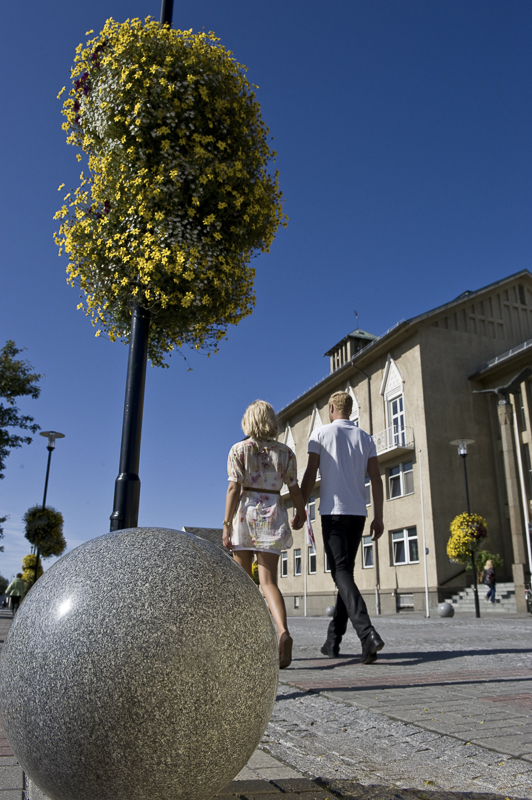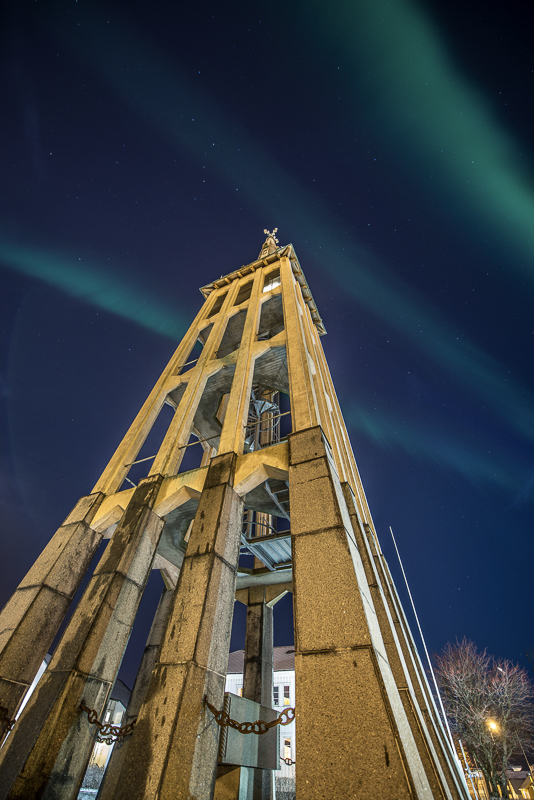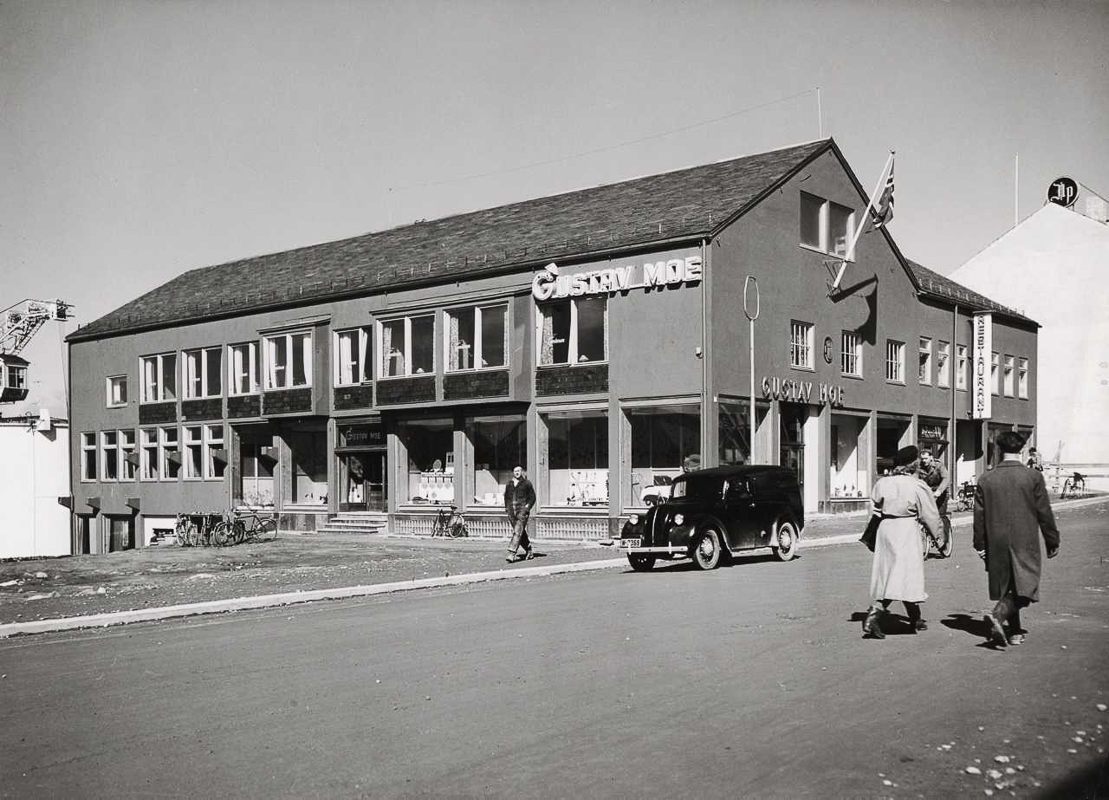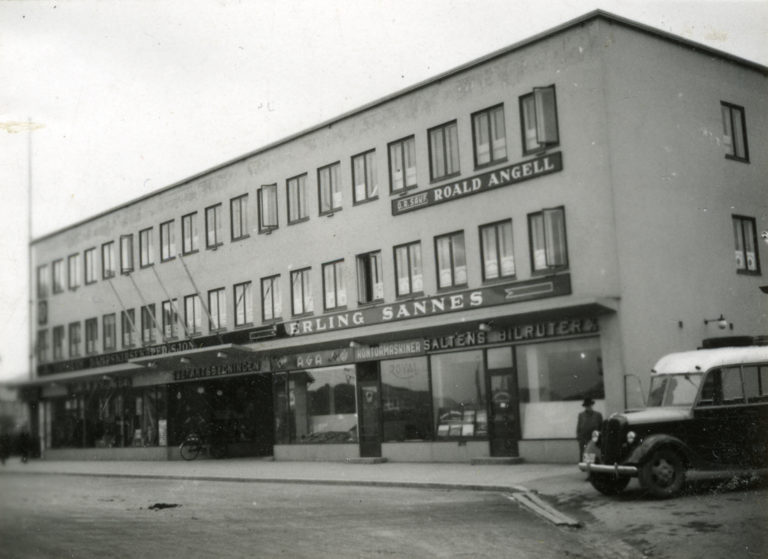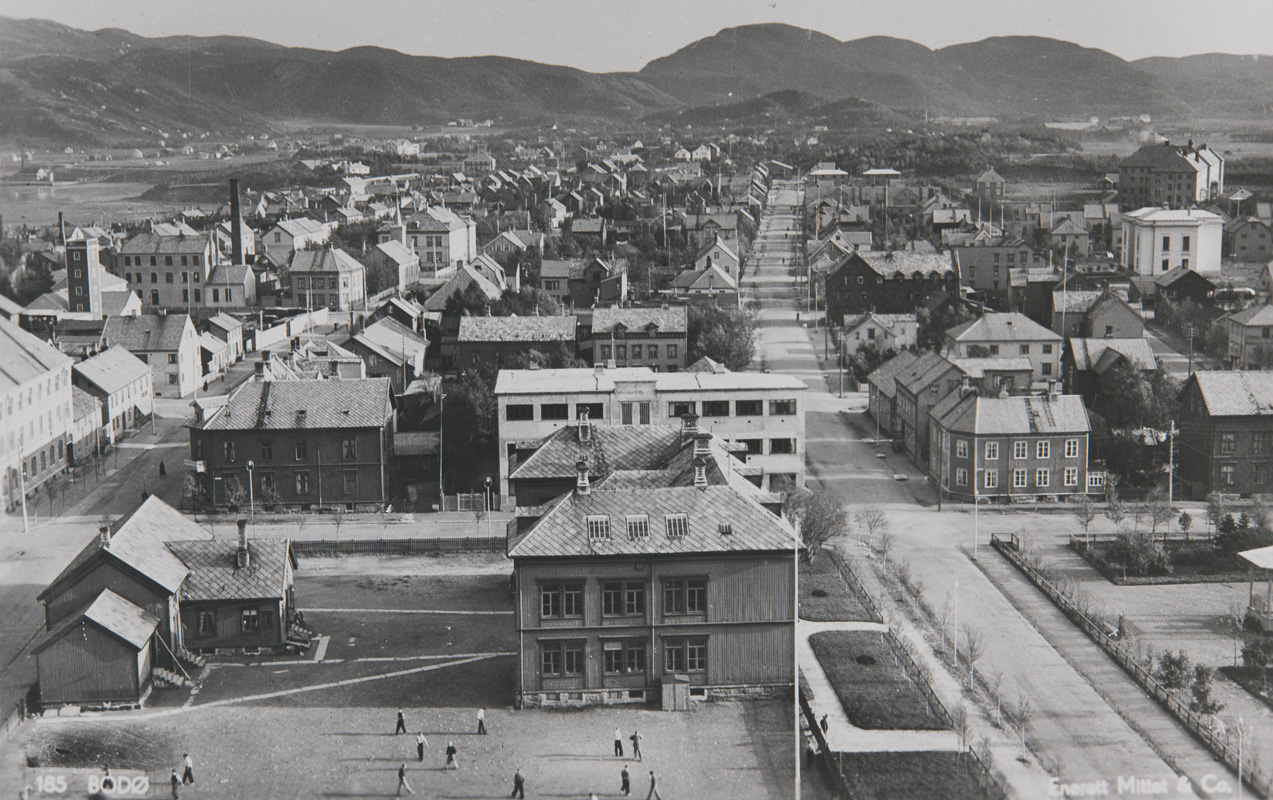Bodø was bombed in 1940 and needed to be rebuilt in a variant of modernism we often refer to as the reconstruction style. Steinar Aas, professor of modern history at Nord University in Bodø, guides us through the simple, modern features of the architecture in Bodø.
Did you know that downtown Bodø was almost wiped out by German bombers in late May 1940? Consequently, the centre of Bodø and several other towns in Northern Norway needed to be rebuilt after the war. This led to many Norwegian towns having a distinctive architecture – a reconstruction or revival style. Despite major growth and changes in Bodø in the post-war period, it’s still possible to find traces of the reconstruction city of Bodø. Let’s go on a city walk through the architectural history of the 1940s, 50s and 60s.
Let’s check what was still standing
Let’s start by looking for the buildings that remained after the bombing. At Hundholmen plass, the site of the current tourist information office, you will find two of the oldest buildings in the city. Directly across the square, you can see the old Grand Hotel, which was also still standing. If you walk west along Tollbugata, you pass the maritime building, which opened as a funky new building in 1937.
The customs house and steam ship company’s administration building are stone buildings that survived
If you walk about 100 m further down the street, you will reach Tollboden (the customs house), which was constructed 1912. The building’s characteristic facade features roughly hewn granite blocks of varying sizes, known as hacking. If you look around the corner to the south, between the new Stormen concert hall and Stormen library, you will see the corner of Dampskipsgården, another pre-war building that survived the bombs. This building, which was constructed in 1931, was the administration of the regional steam ship company, Saltens Dampskipsselskap.
The reconstruction took place in several phases
Downtown Bodø was reconstructed in several phases. We will focus on the first phase between 1945 and 1959. We find the characteristic style, like we see on the facade of the Grand Hotel, first and foremost across the street from the hotel. Merkurgården (1948) on the corner of Storgata and Professor Schyttes gate shows how the style developed. You can see the commercial premises with shops on the ground floor, offices on the first and second floors and flats in the attic. The shops are characterised by large windowpanes and a finely polished facade made from a widely used material of the time – concrete. The columns and window frames are clad in natural stone.
The height and type of roof were carefully regulated
The hight of the inner-city buildings were strictly regulated. For practical reasons, gable roofs were used instead of flat roofs. The latter meant that the angle of the sun did not prevent light and sun from coming down the street or into the buildings on the other side of the street. Moreover, gable roofs were better than flat roofs when the snow melted.
Blakstad and Munthe-Kaas characterise the reconstruction city
Merkurgården was designed by the architects Gudolf Blakstad (1895 – 1985) and Hermann Munthe-Kaas (1890 – 1977) who are perhaps best known for two of the other nearby situated on the brink between the slope and the upper flat plain, namely Bodø Cathedral and the Bodø Town Hall. When you stand by Merkurgården and look up Professor Schyttes gate, you look straight at the church tower that was constructed in 1956 for the newly established Sør-Hålogaland diocese. The church was also built from the modern building material of the time – concrete. The interior is large and open owing to the large arches without supporting columns to hold them up. The front of the church is designed like a classic Italian medieval basilica, while it changes completely from the opposite side and becomes functionalist and typical of the time. On one of the long walls, you can see the Nordland bishop Matthias Bonsach Krogh (1754 – 1828) looking out at the city he founded in 1816, while on the other side the Nordland parson-poet Petter Dass (1647 – 1707) looks longingly south to his fellow villagers in Helgeland. You can hear the carillon marking the hour from the clock tower with a melody composed in 2015 for the world’s northernmost carillon.
Finding your way around Bodø
Bodø was bombed on the 27th of May 1940, and 420 of the 760 houses in town were destroyed. This is why the whole city centre had to be rebuilt after the war. The reconstruction was carried out in modernistic simplicity, giving Bodø its distinct character.
The city centre of Bodø is also the centre for the reconstruction, so here you find business houses, the city hall and the cathedral, among others. The houses in Svenskebyen (“Swedish town” – between the city centre and the airport) is a gift from Sweden.
The local tourist organisation, Visit Bodø, runs a visitors’ centre as well as a varied website.
The town hall has a simple and sober style
To the east of the cathedral, we can see the other important building designed by Blakstad and Munthe-Kaas, namely the Bodø Town Hall. The brown building, which also has a free-standing clock tower, is located at the intersection of Torvgata and Kongens gate. The typical simple and sober style is highlighted here too with the quality of the building materials and a massive and unique architectural character. You can perceive it as boring and monotonous or, from a more positive perspective, as architecture with a unifying, calm expression.
The overall facility is inspired by the Roman city
If you look at the entire quarter as one, i.e. the cathedral, town hall, the park between them and the post and telegraph building to the east, you will see an overall facility representative of its time. This was the city’s forum, inspired by the Roman city, with its administrative and political centre, modern communications, municipal administration and church. The square has traditionally been used as the gathering point at the end of the school procession on Constitution Day (17 May) every year since the war.
The nature forms the backdrop for the city
When you stand up here on the brink above the agora – the city’s commercial centre by the square in Storgata – you will see how the nature surrounding the city was intended as a visual part of the city. The nature is omnipresent. Across the harbour, you can see Nyholmen, the Hjartøya islands and out towards Landegode – the mighty island in the north-east. If you turn the other way, the Børvasstind mountain range in the south stands like a wall framing the peninsula with the flat town. To the west, you can catch a glimpse of the islands in Gildeskål, the mountain Sandhornet and Fugløya. Allowing sun and light into the street and creating views of important landmarks in the surrounding countryside was also part of the reconstruction plan. The interaction between the urban and the rural forms a central part of this. That is why you often see the locals walking along the quays and out to the breakwater to see the natural features that frame Bodø. When the people encounter the nature here, they become part of the urban life.
Discover the reconstruction architecture!
If you walk up and down the streets in the city centre, you will find several examples from the reconstruction era. Walk up and down Storgata or Sjøgata and check out Gustav Moe-gården, Jakhelln-gården, Bankplassen with its two bank buildings, Sparebanken and Nordlandsbanken, and the train station, which was built from red bricks from Bodø Teglverk. These buildings are all well preserved, which unfortunately is not the case for the rest of the city’s restoration era buildings.
The slate roofs have been changed
A typical feature of the changes that have been made in recent years is the replacement of the grey slate roofs with modern black roof tiles. Dormer windows or other roof extensions have been added to many roofs, completely changing the unifying character. Bodø had a coherent slate roof architecture that is now more composite. You can see all this for yourself if you go on a journey of discovery in the reconstruction city of Bodø. You can also visit Svenskebyen (The Swedish Quarter), which was built to help provide housing after the bombing.
The reconstruction towns each have their own personality
If you then travel to other towns such as Kristiansund, Molde, Vardø, Vadsø, Kirkenes, Hammerfest or Honningsvåg, you can compare the towns to find similarities and differences. All these towns have their own characteristics, even though the architecture may look the same.
Steinar Aas is professor of contemporary history at Nord University in Bodø. He has written the town histories of both Narvik and Bodø, where the reconstruction is discussed, as well a book about the airship captain Umberto Nobile. One of his many scholarly articles is about the plans for the reconstruction of Bodø.
